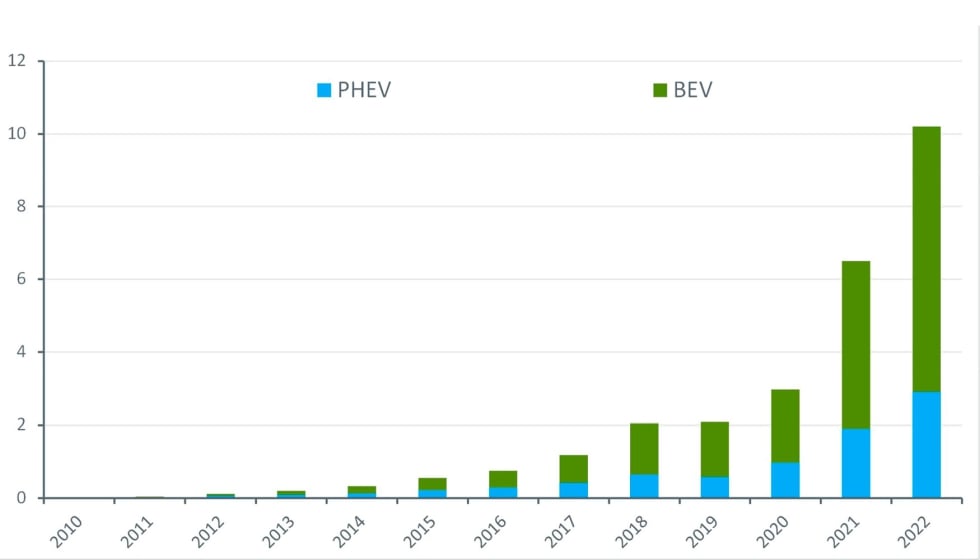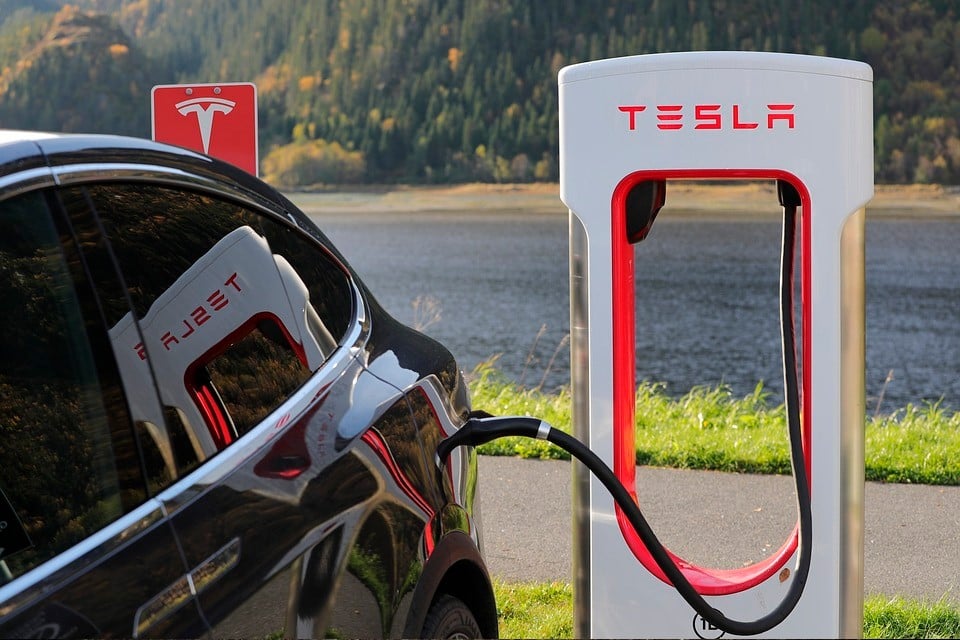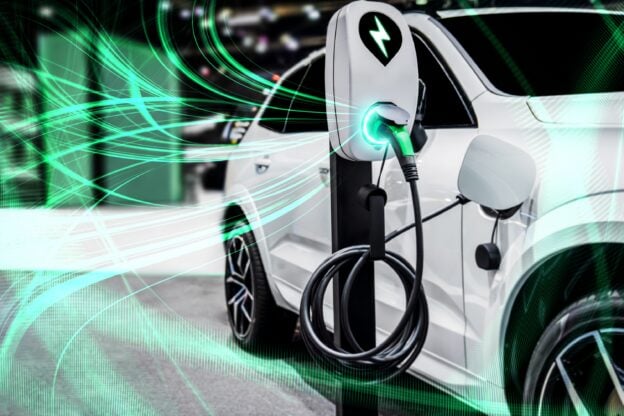Introduction
The impact of electric vehicles has been key to reducing air pollution and lowering our carbon footprint, which significantly contributes to the fight against climate change. Its increasing progress has promoted the transition towards a more sustainable and environmentally friendly mobility.
The electrification of transport is a trend that is growing rapidly around the world. Electric vehicles (EVs) offer a number of advantages over gasoline-powered vehicles, including lower greenhouse gas emissions, lower cost of operation, and greater energy efficiency.
In the near future, we envision a scenario where the streets will be full of silent vehicles with no polluting emissions, and where urban landscapes will be transformed into greener spaces. All this is possible thanks to the revolutionary presence of electric vehicles, a technology that has taken the world by storm and is completely transforming the way we transport ourselves. This exciting panorama offers us a promising horizon in which air pollution will be part of the past and sustainable mobility will become a tangible reality.
Impact of electric vehicles on the automotive industry
Automakers are investing heavily in the development of new EV models, and are adapting their production lines to meet growing demand. In the last decade, progress towards the electrification of transport has been impressive, exceeding all expectations and setting new frontiers in sustainable mobility. As environmental challenges have become more pressing, electric vehicles have emerged as a key solution to reduce carbon emissions and promote a cleaner, healthier future.
Here we will explore some interesting facts, success stories and notable personalities that have contributed to the unstoppable growth of this revolution:
- Exponential growth of electric vehicle sales
In recent years, sales of electric vehicles have experienced exponential growth around the world. According to data from the International Energy Agency (IEA) 1 , in 2022, more than 5 million electric vehicles were sold globally, exceeding sales from the previous year by 43%.
This upward trend reflects the growing acceptance and demand for electric vehicles among consumers and businesses.
According to Interempresas.net, sales of electric vehicles (EV) exceeded 10 million in 2022 (see Figure 1). This equates to 14% of all new cars sold in 2022, up from 9% in 2021 and less than 5% in 2020. This trend has continued in 2023, with more than 2.3 million EVs sold in the first quarter, 25% more than in the same period of the previous year. By the end of the year, thanks to the increase in sales expected for the second half*, it could reach 14 million EVs sold.

- Leaders in transport electrification
Some countries and cities have emerged as leaders in the adoption of electric vehicles and the implementation of progressive policies to foster their growth. For example, Norway has emerged as a world leader in electric mobility, with more than 70% of new car sales being electric vehicles by 2022.
Other countries, such as the Netherlands, Sweden and Germany, have also seen a rapid increase in EV adoption, fueled by government incentives and a sprawling charging infrastructure. - Innovations in battery technology
One of the keys to the success of electric vehicles has been the advancement in battery technology. Companies like Tesla, led by Elon Musk, have been at the forefront of innovation in this field. The introduction of high-capacity lithium-ion batteries has made it possible to increase the range of electric vehicles, reducing anxiety about charging and improving the user experience. - Fleets of electric vehicles in companies
Large corporations and transportation fleets have seen the potential of electric vehicles to reduce operating costs and lower their carbon footprint. Companies like Amazon, DHL and UPS have invested in fleets of electric vehicles for last-mile deliveries, helping to reduce emissions in congested urban areas.
These success stories have shown that the electrification of transport is not only a viable option for consumers, but also a smart strategy for businesses. - Impact on the oil industry
The growth of electric vehicles has had a significant impact on the oil industry. While demand for oil is still considerable, the rise of electric vehicles is expected to gradually reduce reliance on oil for transportation. Big oil companies, such as BP and Shell, have begun to diversify their investments into renewable energy and electrical charging infrastructure to adapt to this new reality. - Adoption on public transport
Public transport has also joined the electrification revolution. Cities like Shenzhen in China have managed to fully electrify their bus fleets, significantly reducing emissions and improving air quality. In Europe, cities like London, Amsterdam and Paris are expanding their electric bus networks to bring cleaner and more sustainable mobility to their citizens. - Electric vehicles and renewable energy
The synergy between electric vehicles and renewable energy is opening up new possibilities for a greener transport system. The integration of electric vehicles with solar panels and energy storage systems allows charging with clean, locally generated electricity. This combination is becoming a reality in homes, businesses, and charging stations around the world.
Impact of electric vehicles on energy infrastructure
The electrification of transport is also having an impact on energy infrastructure. EVs require a source of electrical power to function, and this is driving demand for electricity. The rulers are investing in the development of new renewable energy plants to meet the growing demand for electricity caused by the electrification of transport.
Mass adoption of electric vehicles has been driven by a number of compelling benefits that go beyond mere emissions reductions. However, like any emerging technology, it also faces challenges that must be overcome to achieve its full potential.
- Positive impact on the environment
Not having an internal combustion engine, electric vehicles do not emit greenhouse gases or local pollutants during operation. According to a report by the International Energy Agency (IEA), the mass adoption of electric vehicles could reduce global transportation-related CO 2 emissions by more than a third by 2030.
- Savings in operating costs
Although the initial purchase cost of an electric vehicle may be higher than that of an internal combustion car, EVs have significantly lower operating costs. Studies have shown that electric vehicle owners can save up to 50% in fuel and maintenance costs compared to traditional vehicles.
- Reduced dependence on fossil fuels
Electric vehicles offer the opportunity to reduce dependence on fossil fuels and diversify energy sources for transportation. This can improve countries’ energy security and reduce vulnerability to oil price volatility.
- Success stories: Tesla and Elon Musk
You can’t talk about electric vehicles without mentioning Tesla/Elon Musk. Founded in 2003, Tesla has been a driving force in the adoption of high-performance electric vehicles . Elon Musk has shown that electric vehicles can be exciting, innovative and exceed expectations in terms of performance and range. Tesla has revolutionized the perception of electric vehicles and has shown that electric mobility can be an exciting experience (Figure 2).

Figure 2. Tesla driving force in the adoption of high-performance electric vehicles.
- Challenges in charging infrastructure
Despite the benefits, the mass adoption of electric vehicles faces significant challenges in charging infrastructure. The availability and location of charging stations remain an obstacle for some consumers. However, governments and businesses are investing in fast and ultra-fast charging network expansion to address this issue.
- Autonomy and charging time
Although the range of electric vehicles has improved significantly, some drivers may still experience anxiety about charging and the need to plan their trips carefully. While fast charging technology has advanced, charging times are still longer compared to traditional fueling.
- Battery recycling and management
With the growth of electric vehicles, concerns about the recycling and proper management of batteries at the end of their useful life arise. The industry is working to develop efficient and sustainable recycling systems that allow the valuable materials present in batteries to be reused and recovered.
Challenges and opportunities in energy infrastructure
The electrification of transportation poses new challenges and opportunities for the energy infrastructure that supports the growth of electric vehicles. Demand for energy is increasing with the mass adoption of electric vehicles, which requires strategic planning and efficient charging infrastructure.
Below, we will discuss the main challenges facing energy infrastructure, as well as the opportunities to make the most of this revolution.
- Electric demand and consumption management
With the growth in the adoption of electric vehicles, a significant increase in the demand for electricity is expected. According to the International Energy Agency (IEA), the electrification of transport is expected to account for approximately 6% of global electricity consumption by 2030. This increase in demand poses challenges in the planning and management of electrical infrastructure.
Opportunities : Smart demand management and the implementation of demand response technologies can help mitigate consumption spikes and balance the load on the electrical grid. The integration of electric vehicles as energy storage resources also offers opportunities to optimize electricity utilization and improve system stability.
- Energy storage and emerging technologies
Energy storage is a key component to ensure the stability and flexibility of the electrical system in an environment with a greater share of electric vehicles. Electric vehicle batteries can play a critical role in distributed energy storage, allowing off-peak power to be used during peak demand.
Opportunities : Innovation in energy storage technologies, such as solid-state batteries and large-scale storage, offer opportunities to improve storage efficiency and capacity. Integrating electric vehicles as energy storage sources can also generate additional revenue for vehicle owners by participating in demand response programs.
- Developing a strong charging network
The availability and accessibility of a fast and ultra-fast charging network are essential to ensure the convenience and widespread acceptance of electric vehicles. The expansion of a robust charging infrastructure is a significant challenge, especially in areas with less population density or in rural regions.
Opportunities: Collaboration between the public and private sectors can drive the expansion of the charging network. Tax incentives and financing for the installation of charging stations can encourage investment and growth in infrastructure. The strategic location of charging points in high-demand areas, such as urban centers and frequent travel routes, can improve convenience and accessibility for electric vehicle users.
- Renewable energy integration
The electrification of transport presents a unique opportunity to increase the integration of renewable energy in the transport sector. Electric vehicle charging can be timed to coincide with periods of high renewable energy generation, such as solar and wind, helping to further reduce carbon emissions associated with transportation.
Opportunities: The implementation of variable charging rates based on the availability of renewable energy can incentivize charging at peak generation hours and reduce charging during peak hours. Coordination between power grid operators and EV charging companies can optimize the integration of renewable energy into charging infrastructure.
- Success story: V2G (Vehicle to Grid)
The V2G concept, or “vehicle to grid”, has become a success story in the integration of electric vehicles into the energy infrastructure. This technology allows electric vehicles to return power to the electrical grid when not in use, acting as a source of distributed storage.
Opportunities: V2G offers a solution to mitigate demand and supply challenges in the electricity grid, providing flexibility to adapt to variations in generation and consumption. V2G implementation also opens up new revenue opportunities for EV owners, as they can sell the energy stored in their batteries back to the grid at times of high demand and higher prices.
Driving the transition to electric vehicles
To finish the following content, it is worth mentioning that the transition to electric vehicles has ceased to be a mere aspiration to become a reality in many corners of the world. Governments, companies and industry visionaries have joined forces to accelerate the adoption of electric vehicles and address the challenges that remain.
In this section, we will explore the efforts and strategies driving this transition, highlighting success stories, notable personalities who are changing the way we move:
Government incentives and regulations
Governments of different countries are taking measures to boost the adoption of electric vehicles through favorable incentives and regulations. Some notable examples include:
- Norway: This Nordic country has been a world leader in the adoption of electric vehicles, thanks to policies such as tax breaks, reduced tolls and free parking for electric vehicles. In 2022, more than 70% of new vehicles sold in Norway were electric.
China: As the world’s largest EV market, China has implemented significant incentives such as EV purchase subsidies and quotas for automakers to produce EVs.
The Netherlands: This country has set an ambitious goal to phase out internal combustion vehicles by 2030 and has implemented fiscal and financial incentives to encourage the adoption of electric vehicles - Automotive Industry Commitment
Car manufacturers have recognized the potential of electric vehicles and are committed to the transition to electric mobility. Some of the major manufacturers are devoting significant resources to the research and development of electric vehicles and related technologies. For example:
Volkswagen: The German automotive giant has announced ambitious plans to become a leader in electric vehicles. They are investing billions of euros in developing a full range of electric vehicles under their “Roadmap E” strategy.
General Motors (GM): One of the largest automobile manufacturers in the United States, GM, has announced that it aims to become a 100% electric company by 2035. They plan to invest in battery technologies and expand their electric vehicle offerings in the coming years.
Public awareness and education
The transition to electric vehicles also requires greater public awareness and education. Awareness campaigns on the environmental and economic benefits of electric vehicles are springing up around the world to change perception and debunk myths. Industry personalities such as Tesla’s Elon Musk have played an important role in promoting electric vehicles and accelerating adoption.
Development of charging infrastructure
The availability of a robust and accessible charging infrastructure is critical to the success of electric vehicles. Power companies, service stations and other entities are investing in the expansion of fast and ultra-fast charging networks. Technology has also advanced in wireless charging and the integration of charging points in parking lots and public roads.
Conclusion
The electrification of transport is a crucial step in the fight against climate change and the construction of a more resilient energy future. The automotive industry and energy infrastructure have the opportunity to lead this transformation, creating a world where electric vehicles are the norm and clean energy is the main source of mobility. Only through a shared vision and concerted action can we make this vision of a greener and more prosperous future a reality.
Act now and let us be protagonists of the path towards a cleaner and more responsible world!

